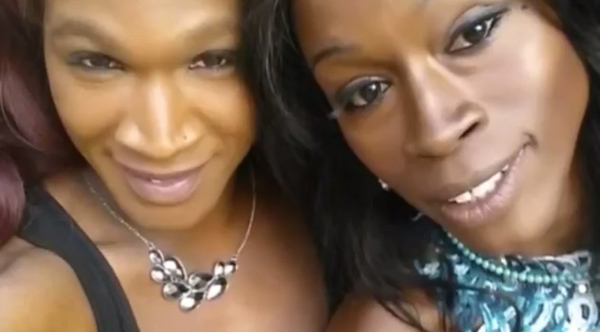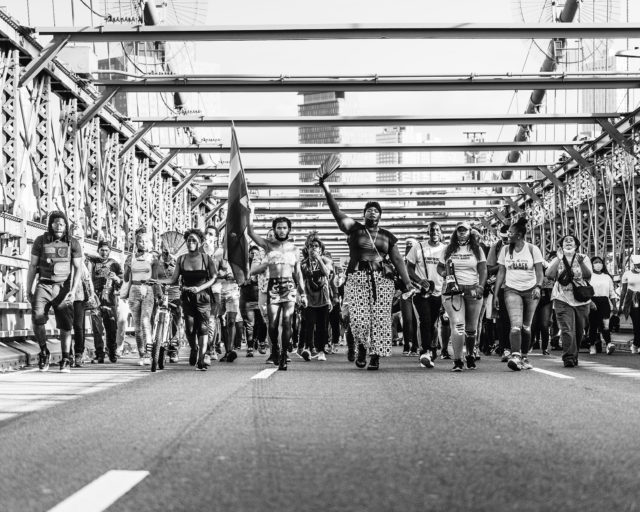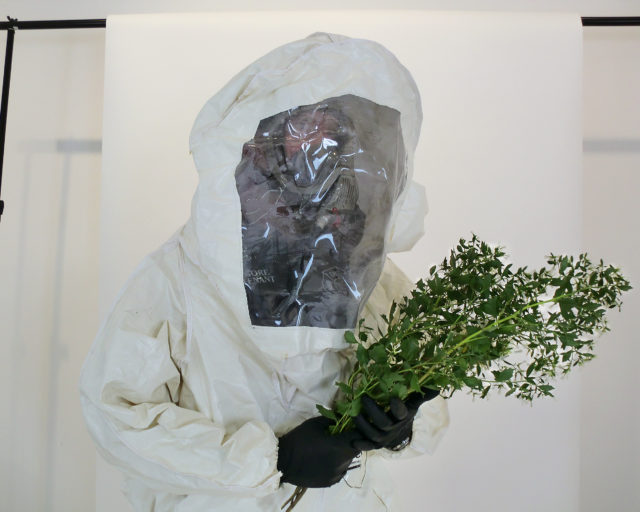The Revolution Will Be Live-streamed
A new exhibition at the International Center of Photography explores the role of images in modern social movements.

Sergey Ponomarev, Refugees arrive in a Turkish boat near the village of Skala, on the Greek island of Lesbos, November 16, 2015
© Sergey Ponomarev for The New York Times
In Perpetual Revolution: The Image and Social Change, currently on view at the International Center of Photography in New York, viewers are engulfed in the imagery of six major social issues facing society today: Black Lives Matter, gender identity, climate change, terrorist propaganda, right-wing populism, and the refugee crisis. Each issue is given its own section in the show; a massive glacier breaks apart in James Balog’s video on one wall, while ISIS propaganda videos play in the museum’s downstairs gallery. With its barrage of pictures, this project might aspire to recreate the overwhelming, often contradictory stream of news and ideas we consume through social media every day. I recently spoke with Carol Squiers, one of the curators of Perpetual Revolution, about assembling and displaying the media of our time.

Rachel Schragis, Confronting the Climate: A Flowchart of the People’s Climate March, 2014–16
© the artist
Will Matsuda: What makes photographs of modern social movements unique?
Carol Squiers: Photographs of social movements are now often taken by the people who create the movements, rather than by people whose profession is photography. The participants in contemporary social movements are able to distribute and publish the images themselves—in the way they want—via social media and other web platforms rather than waiting for a magazine or newspaper to notice or report on the cause.
Matsuda: The exhibition is broken up into six distinct themes. Does this division preclude the possibility of intersectionality between, for example, climate change and racial justice?
Squiers: Our goal in the exhibition was to examine the use and character of networked still and moving images within important but discrete subjects, rather than to mount an intersectional critique between the thematic areas themselves. The viewer will be able to discern the intersectionality of certain themes by close attention to the exhibition—one example: the overlapping concerns about race, physical safety and personal freedom are issues important both in the gender and Black Lives Matter sections. Another example: the use by ISIS of economic theories by far-right wing American conspiracy theorist W. Edward Griffin in its critique of the world economy in The Rise of the Khilafah: Return of the Gold Dinar and the ideas and images of far-right conspiracy theorists as they pertain to the election of 2016. We did not aspire to do exhaustive studies of entire social movements—each of the sections could be a museum-wide exhibition of its own.

ISIS distributes school supplies to girls in Mosul, Iraq, 2015
Matsuda: Social media can provide radical transparency. Diamond Reynolds was able to livestream the killing of Philando Castile at the hands of a St. Paul police officer to millions on Facebook Live. However, the same platforms also lead to the creation and easy distribution of violent ISIS propaganda as well as the far-right’s anti-Semitic memes. Why show this offensive, even traumatic material?
Squiers: The exhibition is about the image and social change in a networked environment. Traditionally, social change has meant positive social change. But the network allows for many kinds of social effects, both good and bad. ISIS and the far-right are examples of successful propaganda that have both had enormous global impacts. The study of propaganda has a long history, which is more important now than ever. The point is no longer to just look at images of social change that make us feel good or that we approve of. It’s necessary to look at the range of image production even though some of it is upsetting. The far-right had a major impact on the election and left a lot of people asking how this happened. We can’t provide an answer to that question, but we can look at the images and point out the themes and tropes that are used.
In terms of violence, there is little violence in what we have shown in the ISIS gallery that wouldn’t have been seen in traditional photojournalism. I have written about photojournalism for many years and used that experience as my guide for what was acceptable. The extreme violence you refer to was either edited out, digitally blurred, or otherwise excluded. If you are watching material that is on the Web, you are probably not seeing what is actually in the gallery.

Sheila Pree Bright, Video still from #1960Now: Art + Intersection, 2015
© the artist
Matsuda: Throughout the exhibition, there are lots of screens showing viral video clips, social media feeds, and memes. Is this the new mode that museums must grapple with in exhibiting and representing the media of our time?
Squiers: We set out to look at imagery on the Web with the intention of displaying the images we found on screens of various sizes, which would echo possible primary viewing experiences. Artists and other kinds of photographers are going to continue making images that are objects. Screen-based imagery is an entire category of photography, though, whether it is still photography or not. It exists, and museums will have to figure out what to do with it.

Gabriel Garcia Roman, Jamal, from the series Queer Icons, 2015–16
Courtesy the artist
Matsuda: “Perpetual revolution” riffs on the Marxist term “permanent revolution.” This is the idea that the working class must be in a perpetual state of revolution with continuous demands and tactics even when oppositional political forces rule. For many people who were surprised by and are now reacting to the Trump victory and presidency, this seems particularly relevant. Why did you choose this title?
Squiers: “Permanent revolution” got turned into “perpetual revolution.” It refers to these enormous social changes that digital technology is producing. Everything in digital technology keeps changing. It’s endless. Pictures cycle endlessly. Conspiracy theories cycle endlessly. History is not packaged neatly anymore. Now history is this huge field of thousands of images washing over all of us. People feel a need to protect themselves from the tides of pixelated history. We’re trying to look at how images and network culture are perpetuating all of these social changes.

Video still from Trans in Media 2, 2015. Kristen Parker Lovell (left) and Kenyatta Kahn (right)
© Kristen Parker Lovell
Matsuda: The idea that images perpetuate social change is contentious. Can an image change anything?
Squiers: There always been this debate about whether photography can change anything. We think that Lewis Hine’s photos of child laborers helped institute public education. We think that pictures of the West helped develop the national park system. But it’s all really hard to prove. People have so much more access to pictures than they ever had before. Before you had to decide which paper you were going to buy. You’d sit down and open it and those would be the images you consume. Now people can get their ten free articles per month from new sources all over. We still don’t have an answer.
Perpetual Revolution: The Image and Social Change is on view at the International Center of Photography Museum through May 7, 2017.

























